5. Unsane (2018)
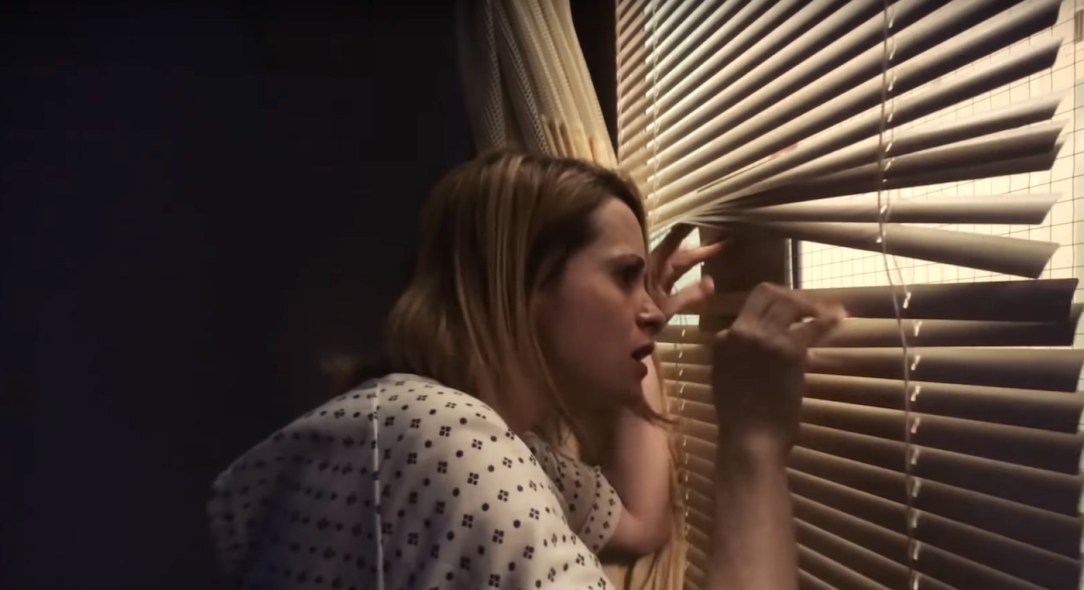
Unsane is, for all intents and purposes, Steven Soderbergh’s first proper foray into horror and, at a cursory glance it moves nimbly through some rather well-trodden territory. The familiar premise, itself an echo of Robert Wiene’s 1920 classic The Cabinet of Dr. Caligari (which is further on down this very list), is that of an innocent who’s confined against their will inside of an icy institution, and who tragically is met with condescension and dismissal when trying to prove their sanity.
Starring Claire Foy as Sawyer Valentini as a thirtysomething urban professional who has previously had to go to great lengths to avoid her persistent stalker, one David Strine (Joshua Leonard). Sawyer had hoped that, having relocated from Boston to a more tranquil and mundane Pennsylvania would vanquish Strine from her thoughts and improve her mental health. Oh, but if it were true! Sawyer seems to see Strine everywhere, and it’s getting in the way of her life.
In an attempt to gain better focus of her fears, Sawyer sees a counsellor at the Highland Creek Behavioural Center, but before you can say “a better bottom line for the insurance companies” Sawyer is being incarcerated over some suggestive (and innocuous) comments.
Things go from bad to worse as the mixed ward Sawyer is stuck in contains the verbally abusive Violet (Juno Temple), a secretive yeet potential ally in Nate (Jay Pharoah), and a few Nurse Ratched-level healthcare “professionals”, and worst of all, a suspicious orderly named George Shaw, who’s a goddamn dead ringer for Strine.
Soderbergh, who not only directed but shot and edited the film from a scripts by Jonathan Bernstein and James Greer, is at his experimental best. Unsane, amazingly, was shot entirely on the iPhone 7 Plus, and with the stunning 4K transfer, it’s stunning to behold (particularly a hallucinatory over-medicated sequence as well as a nighttime chase through the woods that will send your heart racing). Sure, the broad strokes in Unsane are recognizable, but when have they ever been this fresh and this frightening? Soderbergh has rarely been in finer form.
4. Shock Corridor (1963)
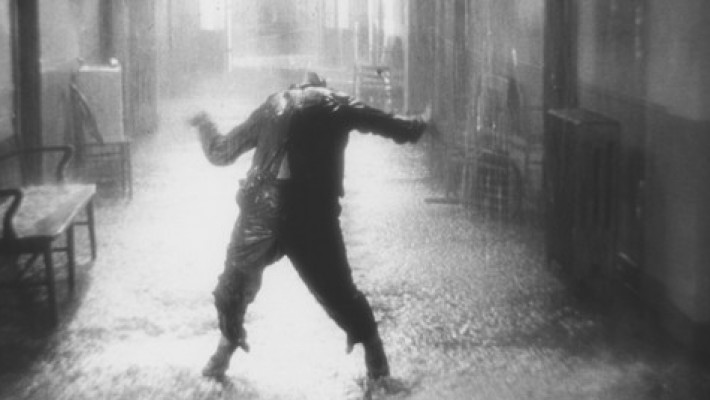
Writer-director Samuel Fuller (Pickup on South Street [1953], The Big Red One [1980]) offers up a powerful melodrama and a moving mystery in Shock Corridor. A far cry from the exploitation picture that Allied Artists marketed the film as, Fuller’s film also packs a surprisingly sharp, and utterly raw emotional wallop.
In a bid to land himself a Pulitzer Prize, reporter Johnny Barrett (Peter Breck) has the idea that to uncover the facts behind an unsolved murder at a mental hospital he’s sure to claim the coveted award. With the reluctant help of his girlfriend Cathy (Constance Towers), an exotic dancer, and some coaching from his psychiatrist friend Dr. Fong (Philip Ahn), Johnny soons sways the doctors at institution where the crime occured to commit him.
Once on the inside Johnny begins his investigation, but he also starts to mentally unravel, and soon straightjackets, aversion shock therapy, and so much more moves from soft to startlingly sharp focus.
Occasionally amoral, often confrontational, totally lurid, and nerve-jangling to the final frame, Shock Corridor is one of Fuller’s most fascinating and finest works.
3. The Cabinet of Dr. Caligari (1920)
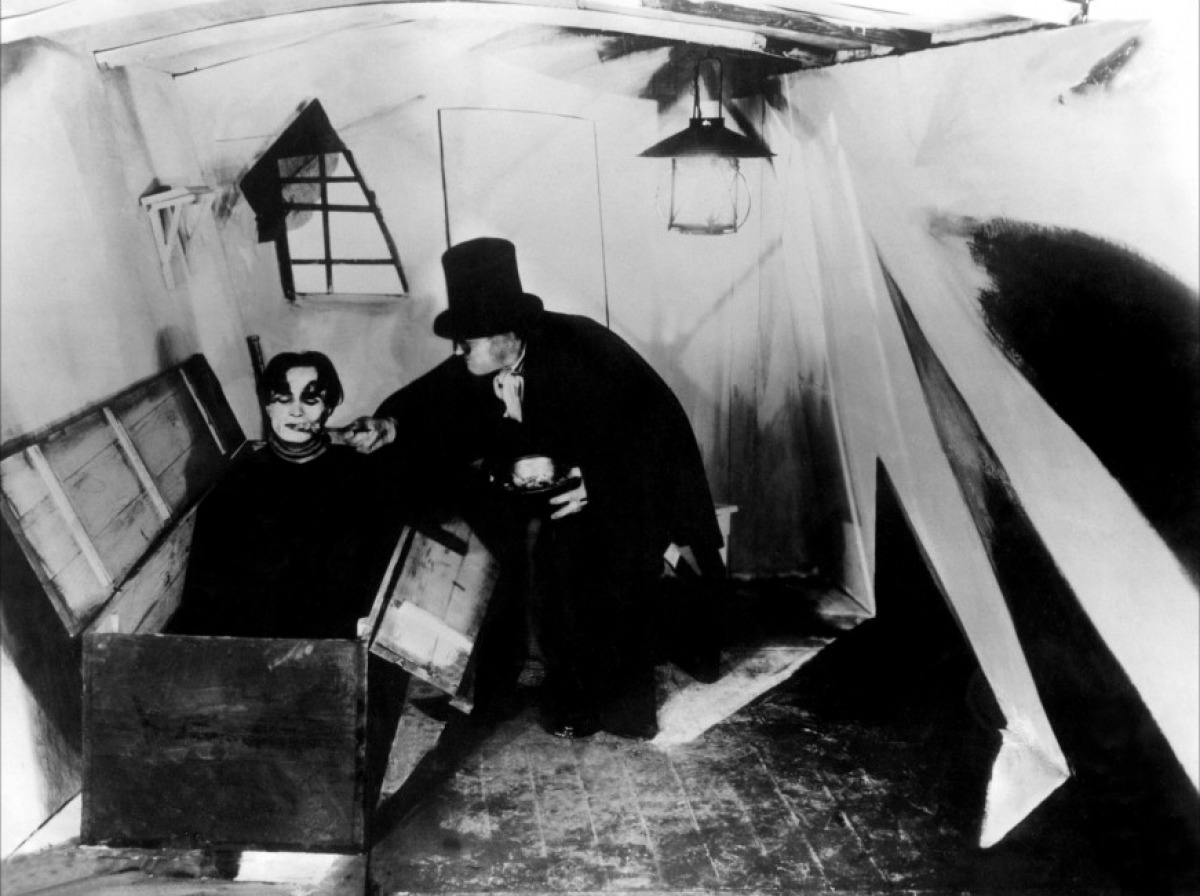
German cinema in the 1920s was strongly bonded with the Expressionist art movement and focussed on the fantastic and the bizarre, and no other film exemplified this as much as Robert Wiene’s stirring, strange, and radically stylized innovation, The Cabinet of Dr. Caligari.
One of the first films in history to be considered a work of art, this revolutionary silent horror masterwork tells the story of the crazed hypnotist Dr. Caligari (Werner Krauss) and his hypnotized lackey, the somnambulist Cesare (Conrad Veidt), regularly used to murder those Caligari deems unfit for life.
Part of Wiene’s strange cinematic technique includes curious narrative leaps such as flashbacks-within-flashbacks, an often imitated twist ending, abrupt close-ups that incite shock, and half-baked yet highly effective distorted sets that express unease and insecurity.
A vanguard to what would later be dubbed arthouse cinema, Roger Ebert famously proclaimed The Cabinet of Dr. Caligari to be “the first true horror film”, and now, nearly a century old, it’s still an effective shocker with an earned legendary legacy. A legacy that includes making psychiatric institutions the stuff of nightmares.
2. Harvey (1950)
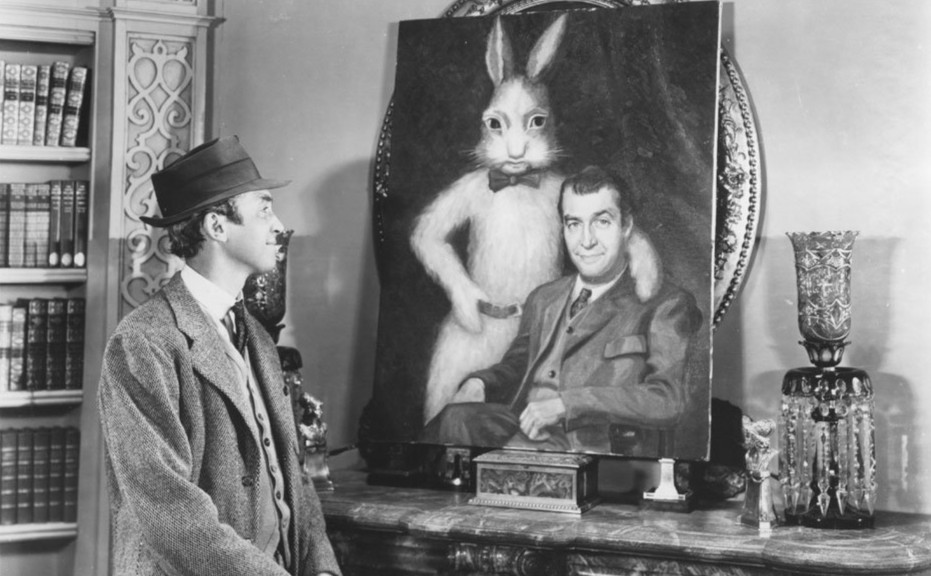
Completely charming, entirely offbeat, and oh so full of whimsy, Henry Coster’s Harvey — adapted from Mary Chase’s prize-winning 1944 play — is a delight from start to finish. Starring screen legend Jimmy Stewart, in what he’s famously purported is his favorite of all his films, is “congenial man of leisure” Elwood P. Dowd, a man who’s BFF is the eponymous Harvey. Oh, and Harvey just so happens to be a pooka, a six-foot, three-and-a-half-inch rabbit that’s invisible to everyone but Elwood.
Elwood’s socially upstanding sister Veta (Josephine Hull, wonderful in this Oscar-winning role) is just about out of patience with Elwood and his big bunny buddy. And while most of the town, including the bartender of Charlie’s Bar, Mr. Cracker (Richard Wessel) who always humors Elwood by bringing him an extra drink for Harvey, find his behaviour endearingly eccentric, Veta sees it somewhat differently. She’s completely convinced that Elwood’s behavior is, amongst other things, hurting her daughter Myrtle Mae’s (Victoria Horne) marriage prospects, let alone making the family a bunch of laughing stocks.Veta unwisely sets out to have Elwood committed to a mental hospital/sanatorium.
A classic by any measure. Harvey was named to the AFI’s lists of the 100 funniest American comedies of all time and also the top ten American fantasies of all time, Harvey is an enduring legacy and a perennial favorite for so many.
“Well, I’ve wrestled with reality for thirty five years, Doctor, and I’m happy to state I finally won out over it.”
1. One Flew Over the Cuckoo’s Nest (1975)
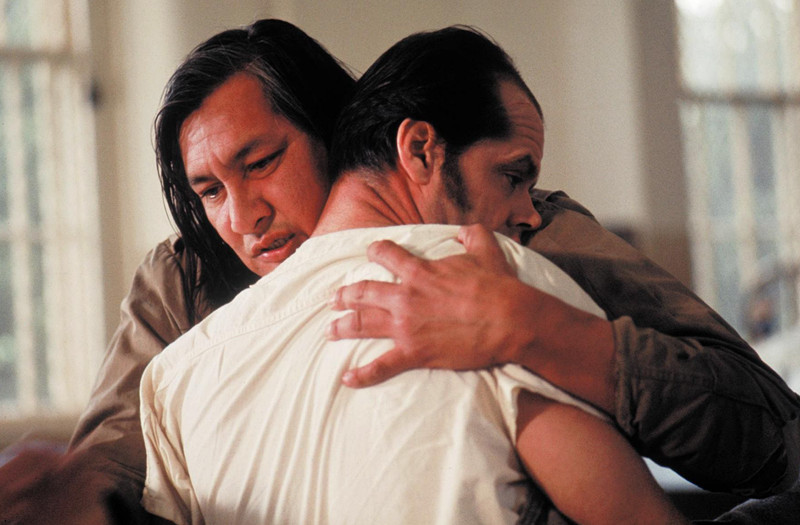
“Rules? PISS ON YOUR FUCKING RULES!” hollars Charlie Cheswick (Sydney Lassick), a nervous, tantrum-throwing at a psychiatric hospital patient in director Miloš Forman’s beloved classic, One Flew Over the Cuckoo’s Nest.
Based on the 1962 best seller by American novelist/Merry Prankster/counterculture icon and raconteur Ken Kesey, Foreman’s film works phenomenally well as comedy, crama, and stinging social critique.
Of course the biggest takeaway from One Flew Over the Cuckoo’s Nest is that it showcases Jack Nicholson’s acting prowess in numerous ways. Sure, he has his scenery-chewing, over-the-top moments (“I’m a goddamn marvel of modern science!”), but his furrowing brow and wolf-like flicker also conveys a subtlety so seldom seen from the –– and the Academy Award for Best Actor was rightly bestowed upon him for his efforts. In fact, Cuckoo’s Nest cleaned house at the Oscars in 1975, with a total of 10 nominations and 6 wins (including Best Picture and Best Director).
Rebellious mental patient Randle Patrick McMurphy (Nicholson) has been shuffled around from a prison farm to a less restrictive mental institution, with the potential for his freedom looming not so far off on the horizon. But sooner than you can say “medication time”, the authoritarian Nurse Ratched (Louise Fletcher), who runs the psychiatric ward that McMurphy now haunts, doesn’t like the cut of his considerable jib. No, for a martinet meanie, Ratched has no qualms keeping her patients bullied via abuse, unnecessary meds, and even electroconvulsive therapy. Who will win this war of wills and what will be the cost?
The first-rate supporting cast includes Scatman Crothers, Danny DeVito, Brad Dourif, Christopher Lloyd, Marya Small, Vincent Schiavelli, and an unforgettable turn from Will Samson as “Chief” Bromden.
While certain aspects of Cuckoo’s Nest haven’t aged particularly well (there’s a fair bit of sexism and sexual politicking that will be a big barrier for modern audiences, potentially), the performances are sublime, the old-fashioned sentimentalism is straight from the heart, the laughter from the belly, the tears soberly earned, and Foreman’s direction is pretty much flawless.
“In one week, I can put a bug so far up her ass, she don’t know whether to shit or wind her wristwatch.”
Honorable Mention: Return to Oz (1985, directed by Walter Murch), A Nightmare on Elm Street 3: The Dream Warriors (1987, directed by Chuck Russell), Girl, Interrupted (1999, directed by James Mangold), Session 9 (2001 directed by Brad Anderson), Shutter Island (2010, directed by Martin Scorsese), Perks of Being a Wallflower (2012, directed by Stephen Chbosky), A Cure for Wellness (2016, directed by Gore Verbinski).
Author Bio: Shane Scott-Travis is a film critic, screenwriter, comic book author/illustrator and cineaste. Currently residing in Vancouver, Canada, Shane can often be found at the cinema, the dog park, or off in a corner someplace, paraphrasing Groucho Marx. Follow Shane on Twitter @ShaneScottravis.